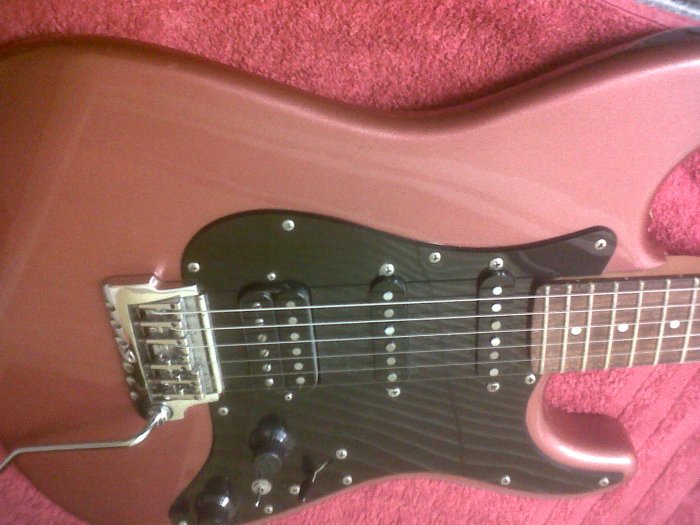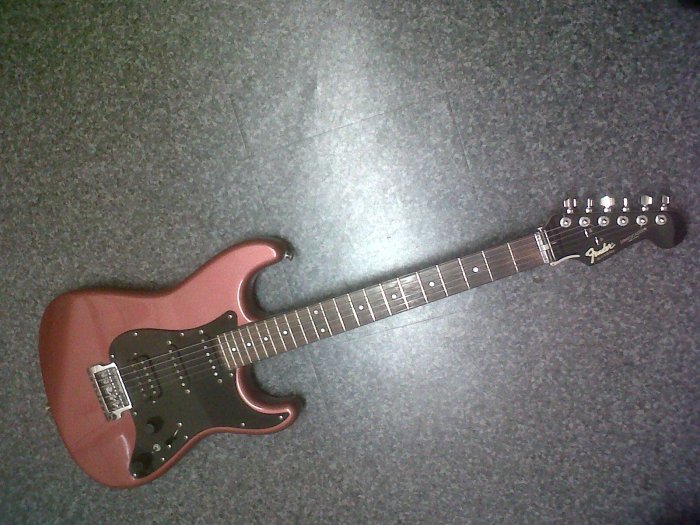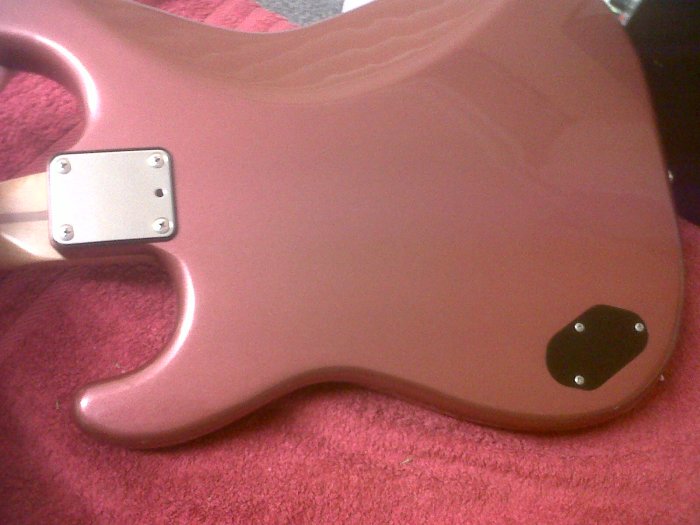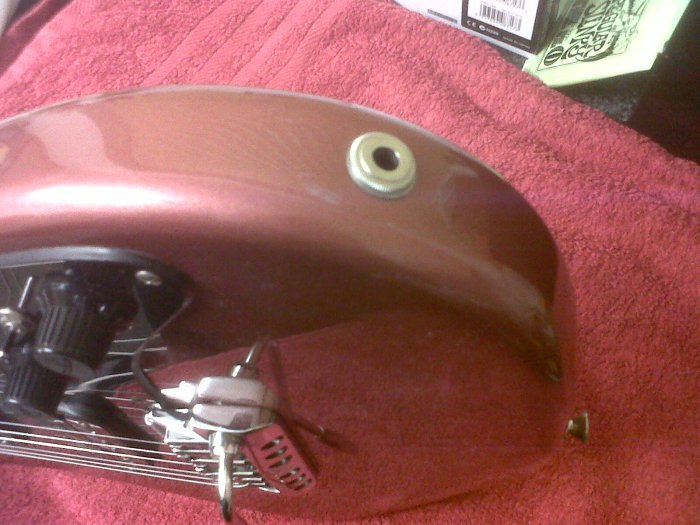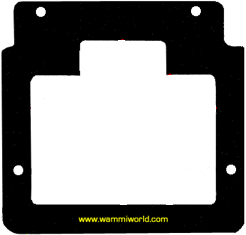A chance find on Gumtree small ads has landed me a good deal on a Kahler non-tremolo bridge so I can now start dismantling the Strat and looking into the mystery of the Japanese routing and the bizarre System II tremolo system which appears to be entirely undocumented anywhere on the internet.
Step 1, neck off, whip off the pickguard and recoil in horror from the cheapo switch and pots. I expect to see those on a Squier, not anything with the hallowed name Fender on the headstock. Add those to the replacement list.
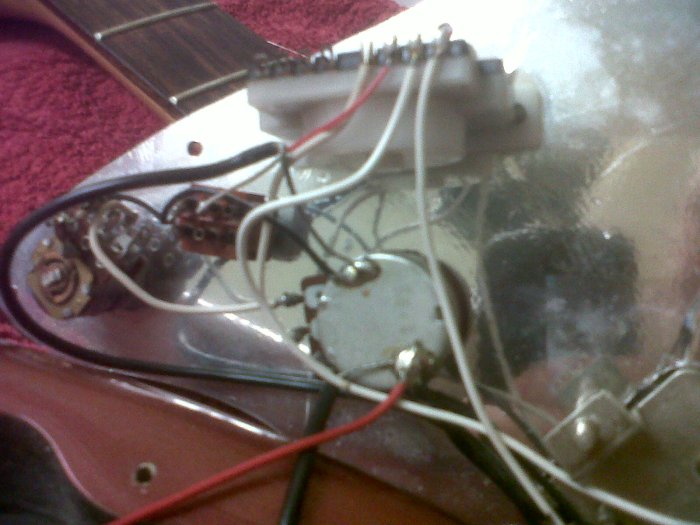
Pickups are decent though. I had an E-series Squier from about the same year and I recall that had badly-made pickups with a bar magnet underneath like a P-90. These have proper magnetised pole pieces which would explain the dramatically better tone compared to the horribly harsh-sounding Squier.
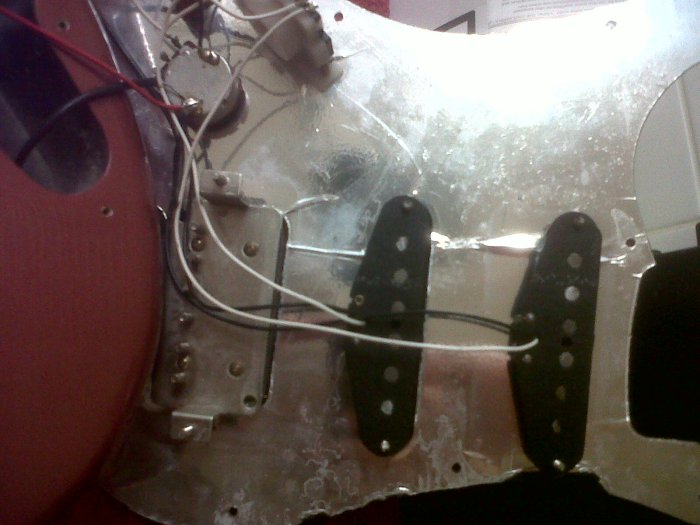
That trem system though … what a strange affair. The bridge has two large springs which pull against a block on a threaded rod. Spring tension is applied by turning a hex bolt near the strap button which moves the block further from the bridge. Here it is in various stages of dismemberment.
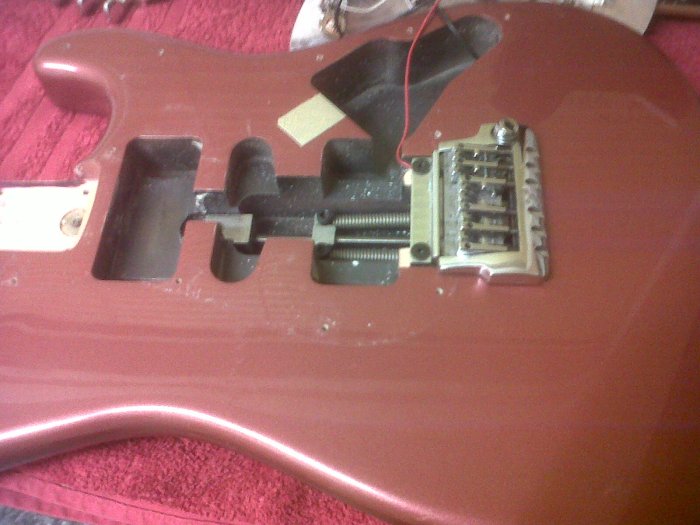
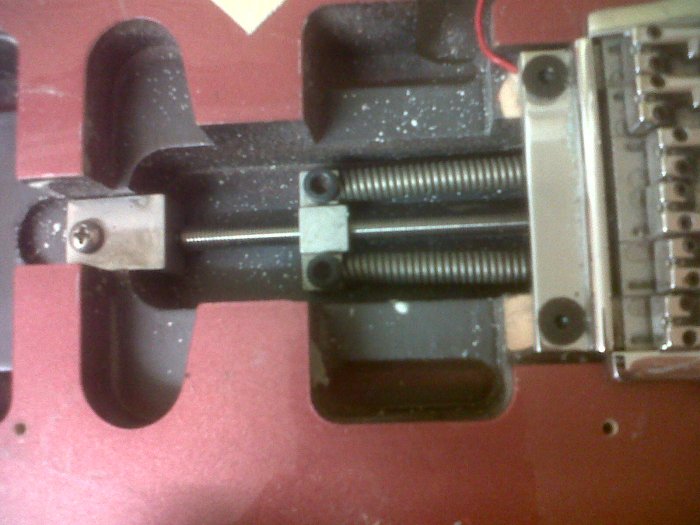
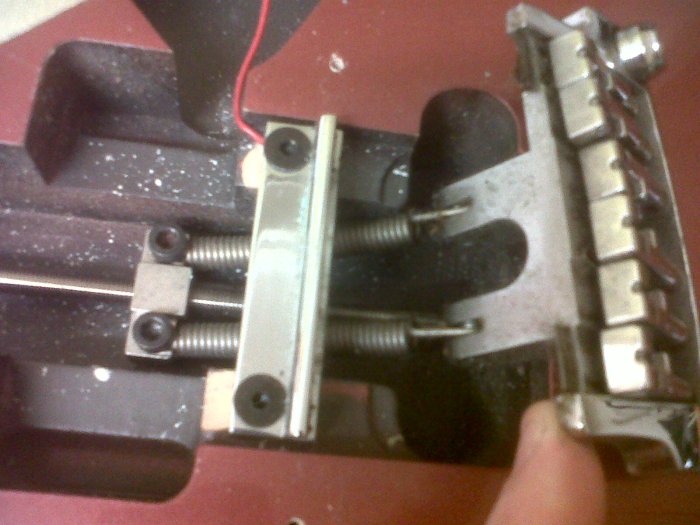
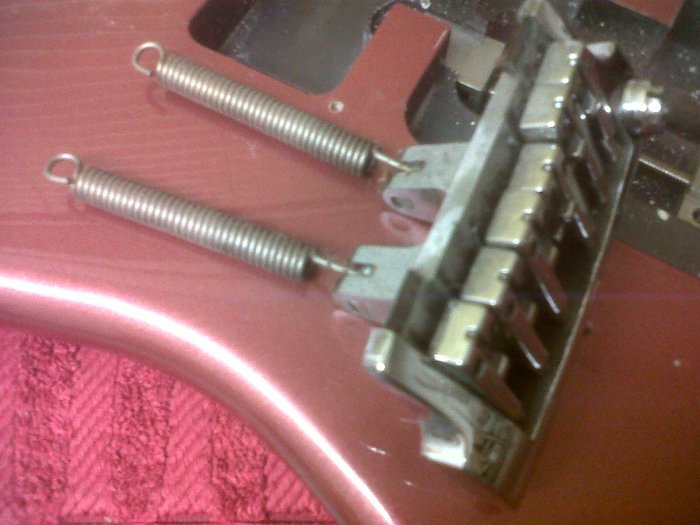
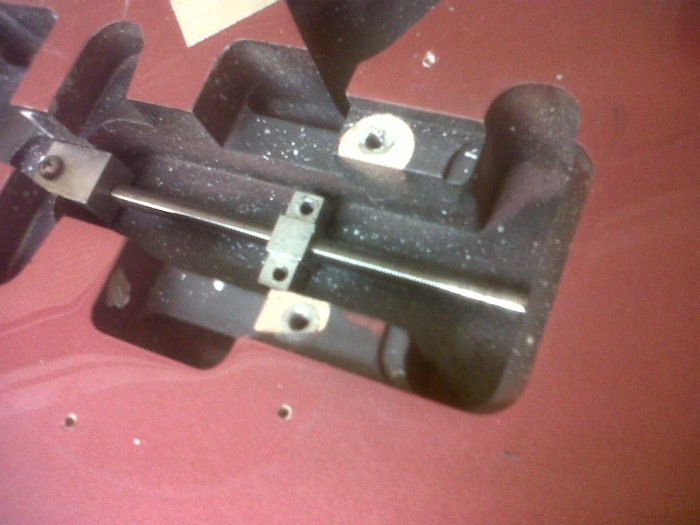
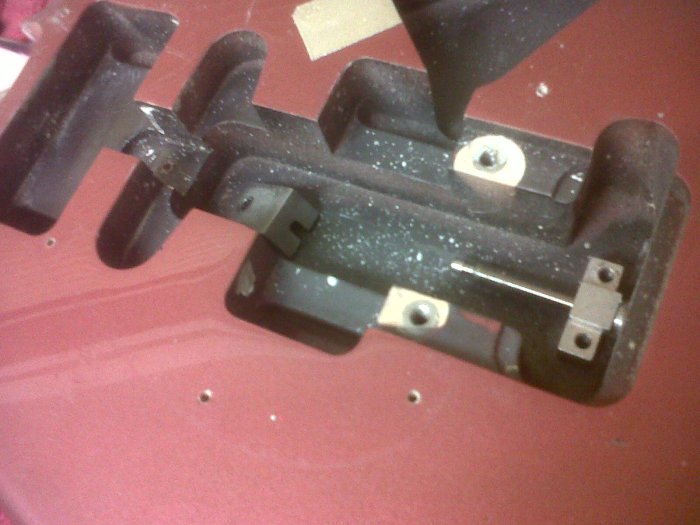
The bridge pivots against a horizontal bar held down with two hex bolts and threaded inserts. Fortunately these inserts don’t look like they will foul the Kahler mounting screws. Looks like we’re in business here. The Kahler routing template seems to indicate that the new bridge should perfectly cover the small amount of excess routing to the rear and side of the old bridge. And damn, it looks so much better with a white pickguard. Another advantage of all that routing is that I’ll have plenty of space to run the GK wiring.
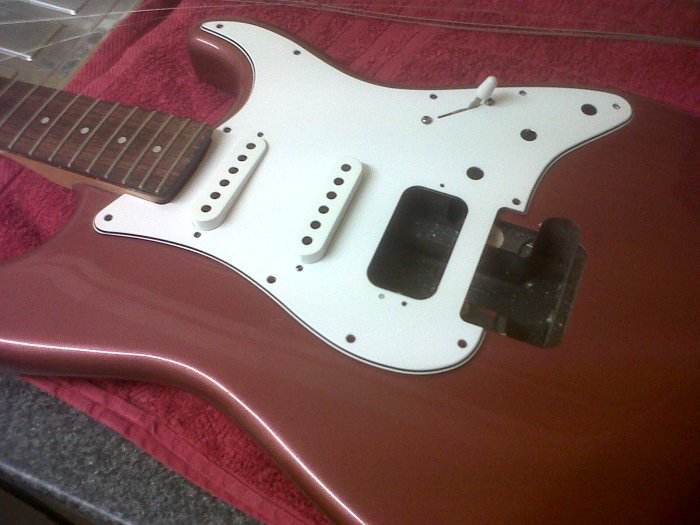
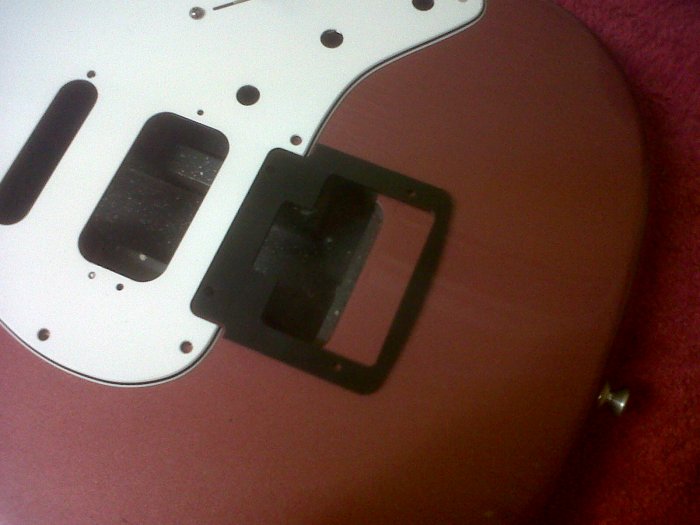
That just leaves the output jack, soon to be repurposed as the 13-pin GK connector. The really good news here is that the hole from the jack cavity to the main body cavity is about quarter of an inch wide by an inch high so I won’t need to widen that at all to fit the Roland multi-way connectors through. Bad news is the jack socket barrel is held in so tightly with a nut and washer that I had to spend 20 minutes with a spanner and pliers getting it out.
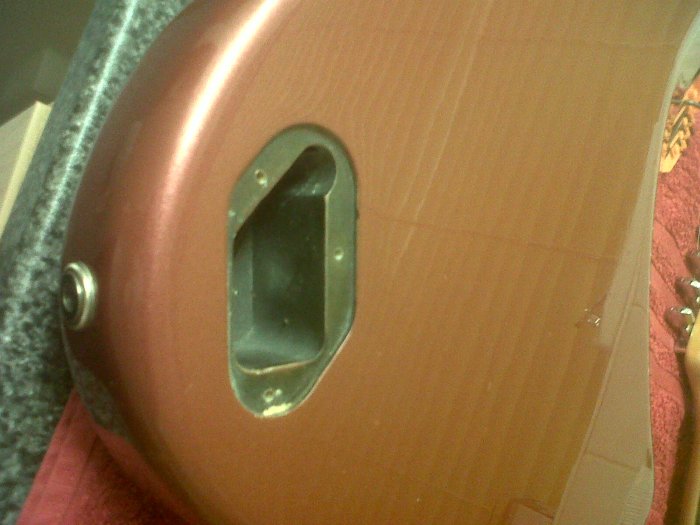
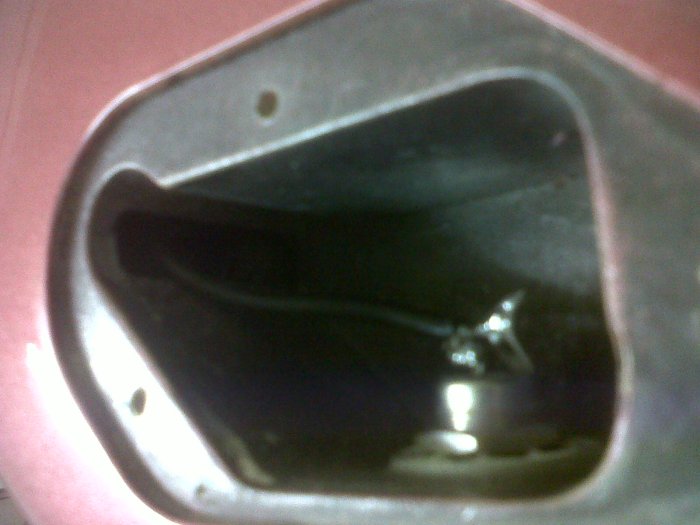
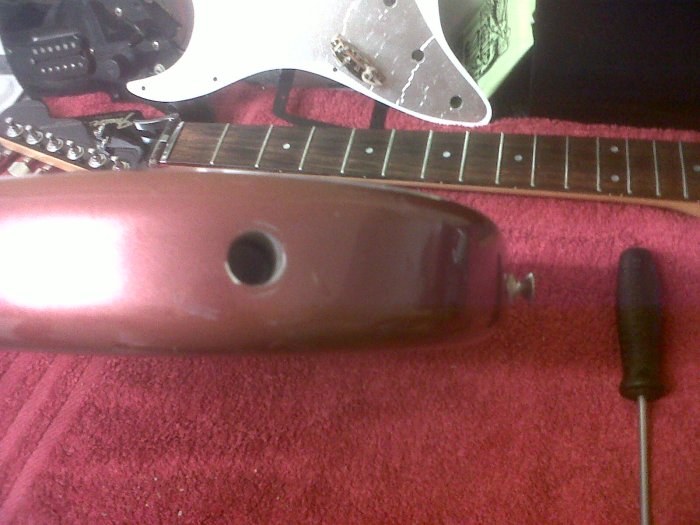
All of which leads me to think that this is going to be just about the easiest GK Kit install ever. For the moment the guitar will be GK-only with no quarter inch output jack. If I feel the need later I may get the router out and install a Strat plate and jack. To be confirmed at a later date, for now it looks like everything should go fairly smoothly.
